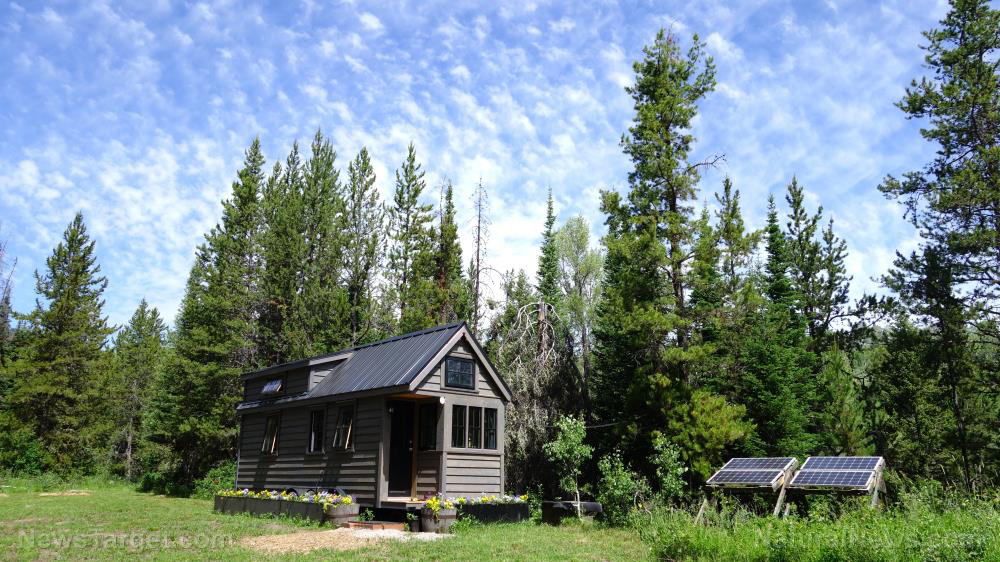How to safely hook up a portable generator to your home
05/25/2021 / By Arsenio Toledo

A portable generator is a great addition to your homestead. It affords you a degree of self-sufficiency, and it will help you power important appliances, such as refrigerators and heating systems, during power outages.
Unlike solar panels, a portable generator produces a lot of power for the money you invest in it, provided that you can keep it running by supplying it with enough gasoline. (Related: 10 Practical tips that will help you survive a long-term disaster without electricity.)
But having enough gasoline to power the generator is not your biggest problem. Your main challenge, especially if you just bought your first portable generator, is to safely hook it up to your home.
Setting up your portable generator can be a confusing process, especially since they usually only come with a panel to plug into. Here is how to safely use your portable generator when the power goes out. (h/t to PopularMechanics.com)
Use a transfer switch
A transfer switch helps you connect your generator to your home’s circuit breaker, allowing you to transfer the generated electricity into your home. This is very important, as it is one of the safest ways to get the power your portable generator produces into your home.
The transfer switch will isolate the circuits in the house that you want to power, leaving all other circuits without access to electricity. This prevents your generator from being overloaded.
The transfer switch also isolates your home and the generator from the rest of the power grid. This achieves two things. First, it prevents the power produced by your generator from backfeeding electricity into the grid. This can spark fires or injure electricians who are working on the power lines.
Second, if your power grid comes back online while you’re using the generator, it prevents the electricity from reaching your home. This can overload your generator and spark a fire as well, most likely damaging your portable generator in the process.
Use heavy-duty cords
If you don’t have a transfer switch installed, get one immediately. If you don’t have the money for it yet and still want to be prepared, you can use long extension cords that are plugged directly into your generator. This means keeping your refrigerator, power tools and computers running.
The cords you use have to be heavy-duty and of a thick enough wire gauge to handle the amount of electricity that will run through them. You can look at the cord’s packaging or ask your trusted handyman.
Once you have your set of heavy-duty power cords, make sure you run them through your house in such a way that they won’t be damaged, coiled or cause anybody harm by tripping or otherwise injuring themselves. This is especially important if you are going to use your portable generator to power a heater or other high-wattage devices. Coiled extension cords can get really hot and melt.
To use your generator with cords correctly, there is a sequence you have to go through. Start the generator, plug the heavy-duty cords in. Then, plug your appliances into the extension cord. When it is time to disconnect your appliances from the generator, reverse this process. Unplug the appliances from the generator, unplug the cords and then turn the generator off.
Learn how and when to use a ground rod
A ground rod or a grounding rod is a safety device that carries current away from a surging electrical circuit and safely routes it into the ground. These are very common because they are great safety devices.
You need to learn when and how to use a ground rod. Do not connect your generator to a ground rod while you have appliances directly plugged into it through extension cords. Any appliance such as power tools, refrigerators or computers need to be disconnected.
You can only use a ground rod when your generator is connected to a transfer switch.
Once you have mastered how to safely connect your portable generator to your home, taking it out during power outages should not be difficult. Just get the generator out of your shed or garage and park it outdoors, where the carbon monoxide the generator produces won’t build up and cause health concerns for you or your family.
Check the generator’s gas tank, fill it if necessary and start the generator. Be sure to check on it from time to time to make sure it is operating normally.
Learn more about how to deal with power outages by reading the latest articles at PowerGrid.news.
Sources include:
Tagged Under: disaster, electricity, emergency, generator, homesteading, how-to, off grid, portable generator, power grid, Power Outage, preparedness, prepper, prepping, SHTF, survival, tips
RECENT NEWS & ARTICLES
COPYRIGHT © 2017 PREPAREDNESS NEWS




















